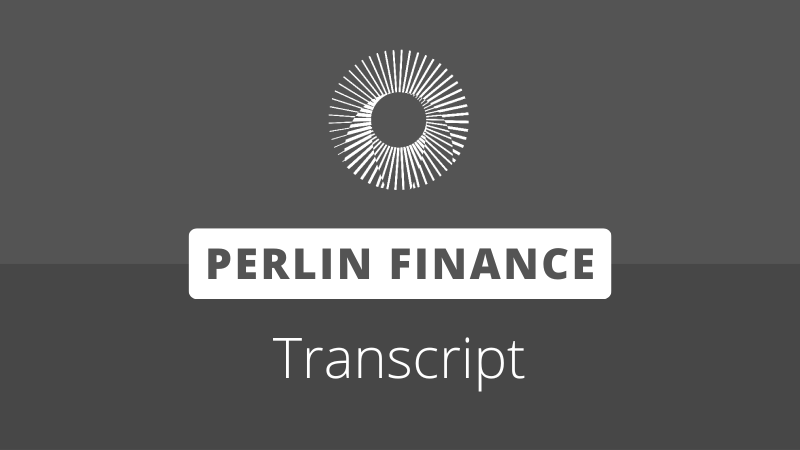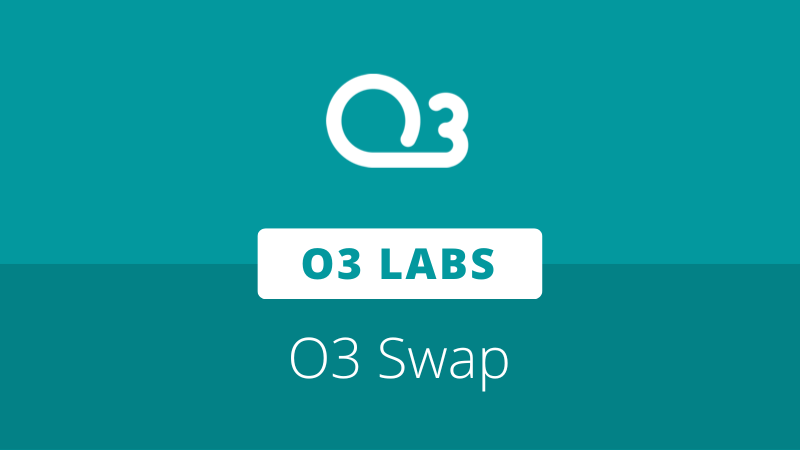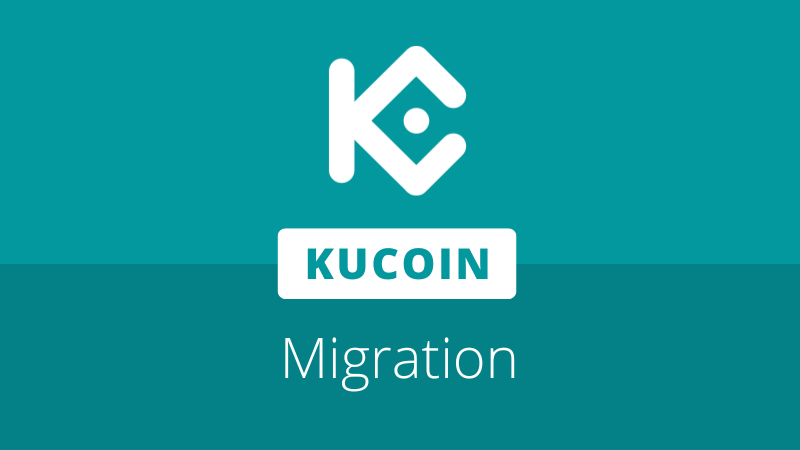
Perlin Finance co-founder John Kim (aka 0xSeoul) joined the Neo Live AMA series to discuss the forthcoming lending and borrowing protocol launching on Neo N3. Ten participants shared rewards from a prize pool of 100 USDT.
The Perlin Finance team aims to build a decentralized money market that will allow users to earn interest on their cryptocurrencies. According to the Perlin team, the protocol creates a more efficient system by using algorithm-based interest rates, drawing inspiration from established pool-based lending platforms such as Compound and Aave.
In the AMA, 0xSeoul discussed the DeFi background of the Perlin Finance team, why the team opted to first launch on Neo, what differentiates Perlin from other ecosystem projects, how Perlin will leverage other DeFi platforms in the Neo ecosystem, the team’s focus on user safety, and more.
The full transcript is below.
Riley (Neo Telegram Admin): 0xSeoul is the team lead for Perlin and has been building DeFi products full-time since 2021. Starting as an AI engineer, he has also led different development teams across the exciting DeFi vertical.
Hi, 0xSeoul. Thank you for joining us today. Would you please introduce yourself to the chat and share a quick overview of Perlin Finance?
0xSeoul (John Kim, Perlin Finance co-founder): Hi all! My name is 0xSeoul, and I am the team lead for Perlin. I’ve been building DeFi products full-time since 2021. Starting my career as an AI engineer, I have transitioned into leading different development teams. DeFi has been the most exciting area to build in.
Perlin is a Neo-native lending protocol that is interoperable with any chain. Currently, lending protocols are limited by the fragmented liquidity in each respective chain, but our innovation comes from cross-chain composability, simplifying transactions between different chains and streamlining the management and transfer of assets across networks.
Not only is the transfer of assets from one chain to another difficult but finding the liquidity for each asset is a huge problem. We solve this by allowing users to transfer assets and take out loans seamlessly.
Q1: Why did you choose to build on the Neo blockchain?
0xSeoul: We have been following up with all the major chains. We were particularly interested in ecosystems that we can expand fast while growing with a strong community. Neo blockchain checked all the boxes.
We saw an opportunity to build the basic to the most advanced DeFi infrastructures. Though Flamingo is doing great, it only offers only the rudimentary building block of DeFi – a DEX. Lending and LSDs are the most natural steps we plan to expand aggressively into.
Also, we loved that building on Neo is feasible and doesn’t decrease the ease of entry for regular DeFi devs. We can build on any language, so we didn’t see many competitors coming in to compete for the same pie here.
Q2: What is your marketing plan? What’s your go-to-market strategy?
0xSeoul: We have different strategies in place as we speak. The first is the referral program – the most effective and well-known marketing plan in Web2 and Web3. If you refer to our project on Twitter, you will gain points via transparent and straightforward calculations based on the referral counts and Tweets on Perlin.
The points are particularly important for users who want airdrops and are utilizing the protocol. Interested individuals can find more information about the campaign on the Perlin Finance website.
We have seen immense growth in active users with the program. We encourage everyone to participate early and reap the awards! Our second focus will be on video content. If you visit our Twitter, you will see more innovative video content moving forward. Follow our official Twitter for educational DeFi shorts and unique video content!
Q3: DeFi products are difficult for average users to use. How do you plan to solve this problem?
0xSeoul: We understand that DeFi is extremely hard to use at the moment. For example, even the largest lending protocol, Aave, doesn’t offer good UX, where users intuitively know what’s what and understand the information thrown at them.
We think deeply about how to make the user experience more accessible and fun at the same time. One thing that sets us apart from other protocols is that we always try to include an entertaining and visually pleasing experience.
I think it’s what differentiates Web3 from Web2 too. We are not here to get the fastest experience, but we are here to enjoy the process. However, we focus on great UX and UI that make the product accessible to everyone.
Q4: How are you building a community around Perlin Finance?
0xSeoul: We focus on the actual protocol users. The current campaigns are directed at acquiring airdrop hunters and mercenary liquidity providers. However, we have a specific agenda to include the Neo and Flamingo users first, and on to users from different chains with our omnichain expansion.
We have big plans for mass adoption, but it’s a bit early to reveal as we still have not reached the second step yet.
Note that we are always thinking about the next steps and the steps after those. Neo will always be our home, but the protocol does not have to be limited to one chain in the multichain ecosystem.
Q5: What problem is Perlin Finance aiming to solve specifically?
0xSeoul: Perlin Finance is a permissionless DeFi lending protocol that allows lenders to earn interest from their crypto holdings. The deposited assets are held in smart contracts known as liquidity pools, and interest rates are adjusted algorithmically based on supply and demand.
The protocol is built on smart contracts, which automate the calculation of interest rates and issuance of loans, eliminating the need for intermediaries. At its most basic level, Perlin Finance serves as an open marketplace where lenders meet borrowers without third-party intervention.
Simply put, Perlin Finance allows users with crypto assets to deposit as lenders and for borrowers to take out loans. The protocol is built with smart contracts that combine the assets provided by lenders into liquidity pools for each supported cryptocurrency. On the protocol, borrowers can take out funds from any of these liquidity pools but not directly from lenders.
Anyone with access to the internet can lend or borrow from the platform. In addition, the protocol bypasses most of the processes involved in taking out a traditional loan. All users need are the crypto assets and one of Perlin’s integrated wallet applications.
We use smart contracts to manage the assets lenders deposit to the liquidity pools. The price of each asset in the liquidity pool is fed into the protocol using our oracle and Flamingo’s price oracle that sources asset price data from various exchanges and LPs.
The protocol uses algorithms to track the changing supply and demand of crypto assets to decide the interest rate for each asset based on the liquidity in the market. The higher the borrowing demand for a particular crypto, the higher the interest rate.
Q6: What measures have you implemented as a platform for lending and borrowing to prevent borrower payment defaults? And how are you better than other crypto firms and conventional banking companies at making lending convenient for people? How is interest figured out?
0xSeoul: We will always over-collateralize the loans and liquidate once the asset price is below a threshold. This process undergoes a time-tested and reliable implementation that Aave and Compound use.
Crypto lending is crucial for DeFi users, as we cannot get liquidity without selling the tokens we want to HODL. For example, we don’t want to sell NEO but may be in need of cash to pay rent or buy a TV. No conventional institutions will accept NEO as collateral and lend you fiat currency. Instead of selling crypto, users can utilize the protocol to set NEO as collateral and get a loan.
The protocol uses algorithms to track the changing supply and demand of crypto assets to decide the interest rate for each asset based on the liquidity in the market. The higher the borrowing demand for a particular crypto, the higher the interest rate.
Q7: Are there any partnerships or collaborations that Perlin has established to strengthen its position in the market? What are Perlin’s main goals and objectives regarding market expansion and adoption?
0xSeoul: Big partnerships are brewing, but we are waiting for the right time to announce our backers and big partners that help make omnichain lending possible. Stay tuned!
For growth, we are targeting omnichain expansion. Our team is highly equipped to build on both EVMs and non-EVMs, unlike the average DeFi builders. New chains and old chains that lack primitive DeFi infrastructures, and the major ones are our targets for expansion. Consider leveraging the ever-growing Aptos, Sui, and Layer 2 users with liquidity from brownstones, like Neo and Ethereum.
Q8: Can you elaborate on the role of Perlin’s team and their expertise in developing and maintaining the protocol? What are some of the potential risks or challenges that Perlin may face in the market, and how does it plan to mitigate them?
0xSeoul: We are experienced DeFi builders, and many of us have been building crypto products since 2019. We have designed and developed entirely new protocols from scratch and dissected existing ones, like Compound and Aave. Designing tokenomics and making partnerships in the space are our expertise from years of experience.
However, as with all DeFi products, security is our biggest concern. We know there are always risks of exploitations regarding smart contracts, and we dive deeply into the protocol with professional auditors and white hackers. We won’t launch on MainNet until we can confidently reveal our product to the users.
Q9: What is the plan for the lending protocol? How do you intend to differentiate from other project lending protocols like Flamingo Finance on the Neo blockchain?
0xSeoul: Flamingo Finance is a great partner of ours, and the team has been making meaningful innovations on Neo for many years. Flamingo’s new FUSD lending protocol is similar to MakerDAO’s DAI, while our product is more similar to Compound and Aave.
We have completely different products targeting different user bases. Also, we must work with Flamingo to liquidate the assets – so we are not competing but working together to build Neo. Users who want to swap their assets will go to Flamingo, and users seeking to lend crypto or stablecoins will come to Perlin.
Q10: Can you explain the process of auditing and testing that Perlin Finance undergoes to ensure the reliability and robustness of its smart contracts?
0xSeoul: We will first work with Red4Sec, a renowned auditing firm for Neo projects, to undergo rigorous testing and smart contract audits. However, we know that we cannot be too sure only with an auditing firm, so we hire white hackers to test the protocol on all aspects on Neo. We will conduct bug bounties and testing on the TestNet until we can confidently launch on MainNet.
Finally, we differentiate ourselves from our ecosystem partners by conducting unit testing on our contracts. This is the tooling innovation we’ve made since coming to Neo. Other projects wishing to come onboard on Neo can utilize our testing tool to see if the protocol is safe.
Note: Some edits have been made for formatting and readability.
The entire conversation can be found at the link below:
https://t.me/NEO_EN/266365







About The Author: Dylan Grabowski
Dylan is a reformed urban planner with a passion for covering the Neo ecosystem. His objective as a writer for Neo News Today is to report news in an objective, fact-based, non-sensational manner. When not behind a computer screen, he can be found in the mountains rock climbing. Find Dylan on Twitter (@GrabowskiDylan).
More posts by Dylan Grabowski